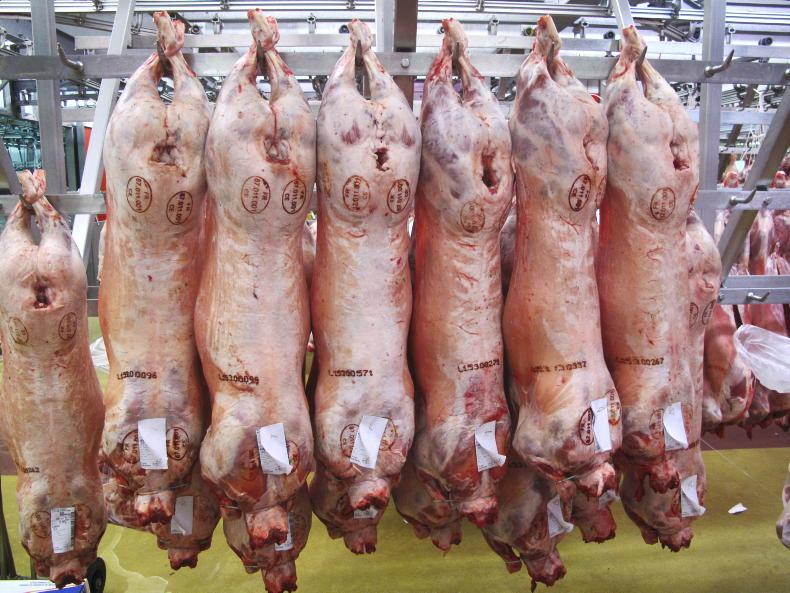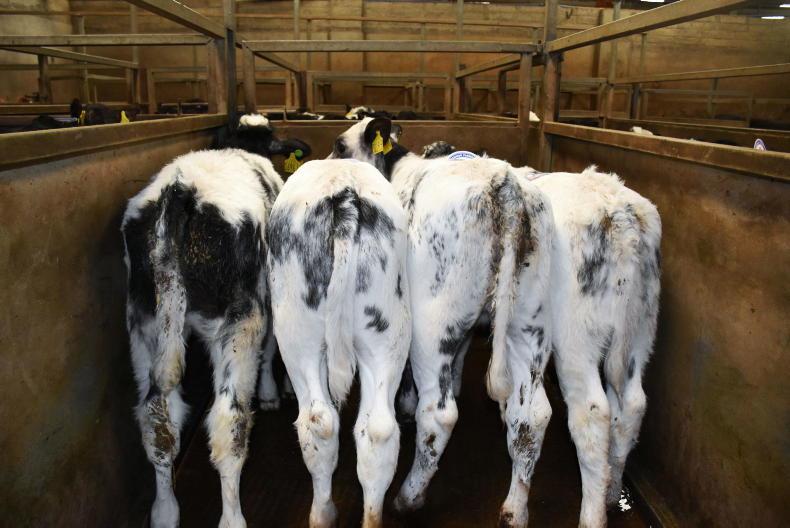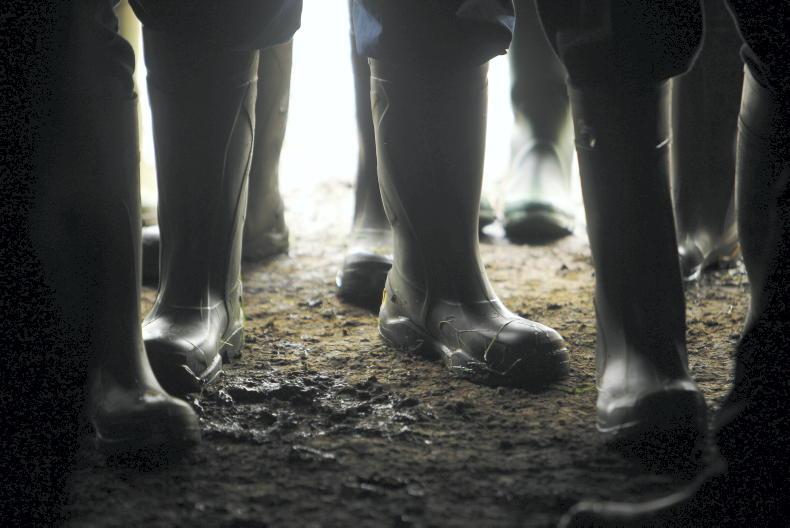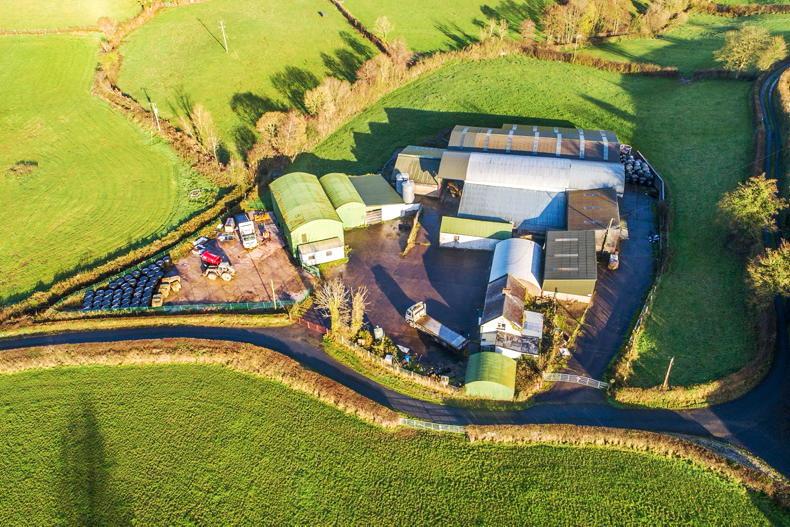Heavy rain over the past week has seen ground conditions rapidly deteriorate on many suckler farms, particularly in the west and northern areas of the country.
Grass growth has also came under pressure with cooler temperatures. Both factors are forcing many farmers into housing cattle much earlier than planned.
The aim should be to house cattle when they are dry, but this is not always an option. When housing stock, outlined are five things to consider.
1. Prioritise cattle for housing
If possible, give priority to certain cattle groups for housing. For example, start with forward stores and finishing cattle. They will not be thriving on wet grass and causing damage around meal troughs.
Hopefully, there will be an opportunity to return some cattle back to grass again. In such instances, cows that are settled in calf could be housed. However, leave cows served inside the past month at grass, if ground conditions permit. The change in diet and environment can cause embryonic losses in cows recently served.
Autumn calving cows can be housed as they will not be cycling yet, so the change in diet will not impact fertility.
Light to mid-weight stores should also be considered for housing, especially heifers as they can cause high levels of ground damage with animals coming in and out of heat.
2. Silage and meal feeding
Target higher quality silage and concentrate to finishing cattle. Animals can have a short period of compensatory growth if housed in wet conditions, giving a good return on a high energy diet.
Cows with calves should also get meal to drive milk production.
Spring calving cows in late lactation should get 2kg/day with average to good quality silage, rising to 3kg/day for cows in early lactation.
Feeding meal to weanlings or light stores is a good way to monitor cattle health after housing. If young animals are slow to come forward for meal, they may be in the early stages of pneumonia.
3. Airflow
A good flow of fresh air is important in cattle sheds to reduce respiratory problems. Keep shed doors open and remove a few side sheets of tine or space boarding if needed to improve airflow.
4. Clipping cattle
Once housed, clipping cattle along the back, neck and head will help animals to regulate body temperature when housed. That can reduce problems with respiratory diseases.
5. Creep pens
Offer calves a creep pen with access to meal and forage. Calves can be injured if they have to compete with cows at the main feed barrier.
Straw is expensive, so give consideration to alternative bedding like wood chip or make use of rubber mats.
Wood chip can improve the cleanliness of cattle over straw, which helps the presentation of cattle that will be sold live this autumn. The downside to woodchip is incorporating it back into the soil.
Read more
Over 15,000 more farms face splash plate ban
Beef Management: weather, buying weanlings and empty cows
Heavy rain over the past week has seen ground conditions rapidly deteriorate on many suckler farms, particularly in the west and northern areas of the country.
Grass growth has also came under pressure with cooler temperatures. Both factors are forcing many farmers into housing cattle much earlier than planned.
The aim should be to house cattle when they are dry, but this is not always an option. When housing stock, outlined are five things to consider.
1. Prioritise cattle for housing
If possible, give priority to certain cattle groups for housing. For example, start with forward stores and finishing cattle. They will not be thriving on wet grass and causing damage around meal troughs.
Hopefully, there will be an opportunity to return some cattle back to grass again. In such instances, cows that are settled in calf could be housed. However, leave cows served inside the past month at grass, if ground conditions permit. The change in diet and environment can cause embryonic losses in cows recently served.
Autumn calving cows can be housed as they will not be cycling yet, so the change in diet will not impact fertility.
Light to mid-weight stores should also be considered for housing, especially heifers as they can cause high levels of ground damage with animals coming in and out of heat.
2. Silage and meal feeding
Target higher quality silage and concentrate to finishing cattle. Animals can have a short period of compensatory growth if housed in wet conditions, giving a good return on a high energy diet.
Cows with calves should also get meal to drive milk production.
Spring calving cows in late lactation should get 2kg/day with average to good quality silage, rising to 3kg/day for cows in early lactation.
Feeding meal to weanlings or light stores is a good way to monitor cattle health after housing. If young animals are slow to come forward for meal, they may be in the early stages of pneumonia.
3. Airflow
A good flow of fresh air is important in cattle sheds to reduce respiratory problems. Keep shed doors open and remove a few side sheets of tine or space boarding if needed to improve airflow.
4. Clipping cattle
Once housed, clipping cattle along the back, neck and head will help animals to regulate body temperature when housed. That can reduce problems with respiratory diseases.
5. Creep pens
Offer calves a creep pen with access to meal and forage. Calves can be injured if they have to compete with cows at the main feed barrier.
Straw is expensive, so give consideration to alternative bedding like wood chip or make use of rubber mats.
Wood chip can improve the cleanliness of cattle over straw, which helps the presentation of cattle that will be sold live this autumn. The downside to woodchip is incorporating it back into the soil.
Read more
Over 15,000 more farms face splash plate ban
Beef Management: weather, buying weanlings and empty cows









SHARING OPTIONS